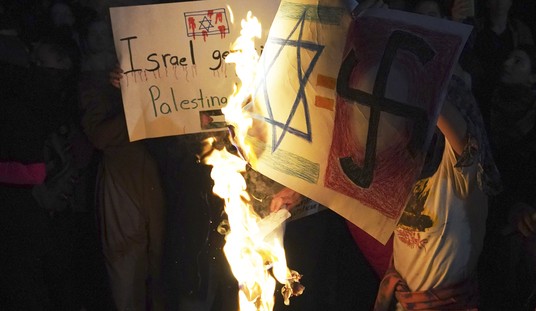Many Americans might have felt surprised by recent news that U.S. Border Patrol in Arizona caught 11 Iranian migrants who crossed the southern border from Mexico.
But this crossing is not surprising in one insular quarter: an international cadre of intelligence and law enforcement officers who work on this chronically misunderstood threat problem for the American homeland security establishment. For them, southern border crossings by Iranians, as well as by migrant travelers from other countries of terrorism concern, like Syria, Iraq, Pakistan, Yemen, and Somalia, trigger an almost routine response the public never sees.
My new book, America’s Covert Border War, The Untold Story of the Nation’s Battle to Prevent Jihadist Infiltration, reveals these responses as part of a hidden American counterterror effort that has long regarded this human traffic as a distinct national security border threat and which has worked to neutralize individuals who might show up to the border seeking to eventually attack. The book also shows Americans step-by-step how thousands of Iranians and travelers from all of the world’s many other countries of terrorism concern reach the southern border every year and what the United States is doing throughout the Americas to stop it.
The mission was always and still is to stop border crossings of travelers from countries of terrorism concern like Iran or to at least make sure arrivals are not malevolent spies or terrorists.
Recommended
What is happening with the Iranians
Take the Iranian travelers just caught in Arizona. One main prong of America’s covert border war flags border-crossing migrants from Iran for intense examination. Once the arrival flag goes up, federal officers interrogate the migrants in person for true hearts, minds and intent while collecting intelligence necessary to hunt down their smugglers in Latin America. It’s an imperfect system when it comes to trained or good liars but, as the book shows, has caught jihadist travelers.
Almost certainly, American officers are working over each and every one of the Iranians who just got caught, especially amid recent Iranian vows to retaliate for the January 2020 U.S. drone-strike assassination of Iran’s Islamic Revolutionary Guard Corps-Quds Force General Qasem Soleimani.
No public information points to border infiltration as a means for Iran to exact its revenge. But no matter; investigative efforts targeting the 11 Iranians are designed to reduce risk and uncertainty about them. Long before the Soleimani retaliation threat, American officers always interviewed every Iranian who crossed the southern land border for other reasons.
The latent national security issue was not so much that Iranian terrorists would blow up something so much as that they would spy. Conversely, Iranians might be genuine government abdicators willing to provide valuable intelligence about the Revolutionary Guard and Al Quds forces, which are U.S.-declared foreign terrorist organizations.
For some time in the foreseeable future, U.S. homeland security will have no choice but to consider the migrants in light of both espionage and Iran’s promises of retaliation.
How Iranians Get to the Southern Border
During reporting in Central America for my book, I once met and interviewed four Iranian migrants who had gotten as far as Costa Rica.
Intercontinental smuggling organizations, highly specialized in their complex tradecraft, transport Iranians to South America and guide them through to Mexico. In a Costa Rica migrant rest camp in December 2018, U.S.-bound Iranian citizen Sina Zandi Chareh Bayan explained that he and his three Iranian traveling companions flew to Ecuador, which required no visas at the time, then used smugglers to make their way through Colombia and Panama.
I asked Bayan if he thought the Americans would worry about his unexpected arrival, given the tormented relations between the U.S. and Iran.
“Actually, there’s nothing about us to be worried and to hide,” he said. “We will tell the truth. If they accept, good. And if they don’t accept, I don’t know what, and I don’t care. As President Trump says many times, the problem is between governments, not people.”
Still, homeland security feels duty-bound to determine that the 11 Iranians actually do have nothing to hide.
The other thrust of America’s covert border war involves breaking up smuggling organizations in Latin America that bridge the gap between Iran and the southern border.
Just in September, ICE-Homeland Security Investigations helped Brazilian investigators break up a major Iran-to-southern-border smuggling ring. The target was Reza Sahami, a dual citizen of Canada and Iran who was caught guiding a group of seven Iranian nationals in the city of Assis Brasil on the border of Peru. All seven carried altered passports from Israel, Denmark, and Canada.
Brazil is prosecuting but HSI, which works in foreign posts throughout the Americas hunting these smugglers, played enough of a significant role to issue its own press announcement, which was largely ignored despite the heightened Iranian threat.
“Sahami has been smuggling criminals across international borders for over ten years,” said ICE Attache for Brazil and Bolivia Robert Fuentes in the ICE press statement.
But the smugglers clearly are tenacious. The Arizona captures demonstrate that the American effort is imperfect and is still needed, especially at a time when the nation seems poised to undergo a dramatic surge in illegal immigration at the southern border.
What Will Happen Next
Probably the Iranians caught in Arizona claimed asylum as soon as they met Border Patrol agents. This means that, for now, they cannot be returned to Iran based on their probable claims that the regime would persecute them.
If U.S. interrogators find nothing untoward about the 11 Iranian border-jumpers, they will eventually bond out of detention, get work permits, settle inside the country as their cases slowly work through the asylum process.
A variety of other outcomes await if it turns out some or all are spies or terrorists, to include prosecution for immigration fraud or other crimes. It also could happen that the United States would be stuck with any Iranian found to harbor nefarious missions and intentions because Iran does not generally accept its expelled citizens. Iran is on the list of so-called “recalcitrant” nations that do not cooperate with U.S. deportations, so if these turn out to be bad ones, they could be free to live and walk amongst us anyway.

























Join the conversation as a VIP Member